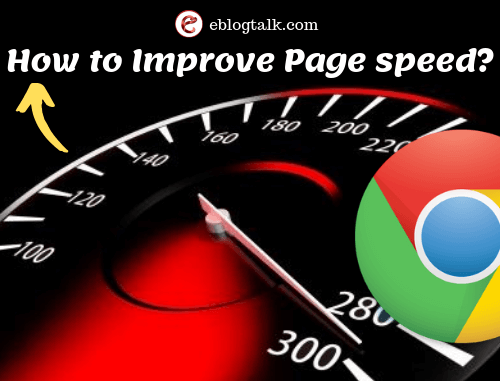Is really page speed matter for a website?
Yes, page speed is a ranking factor. In other words, if your site is not optimized to load quickly. The website wouldn’t rank high. Users abandon your website’s page due to low page speed. If it takes a too long time to load, people will go elsewhere. When your page is abandoned, Google assumes the users cannot find what they are looking for on your site. And Google will tweak things to serve better results.
Why does the site’s page speed matter to SEO?
Website speed performance will influence keyword’s ranking in search engines. To rank higher in the search engines, many website owner-report seeing an increase in their traffic after speeding up their design. If your website speed is slow, visitors will switch your website to others. The time it takes your website to load influences how successful your website will be.
Today, I would like to share various tips on how can you optimize your website and decrease your loading time. Before applying these techniques to your website, check the page speed of your website by using free tool Gtmetrix, page speed insights. By using these tools you will get the idea of your website’s file size, loading page speed.
Click on the given links to get dofollow backlinks sites:
- PDF Submission sites list
- Edu sites list for backlinks
- My response is on my own website
- 100+ Social Bookmarking sites list
Below are a few tips to optimize your website
Hosting
You can think to optimize your website only after you surely know that it is not your host that is slowing down your site. Recently I optimized a site which is hosted on Godaddy, which is the worst hosting site that puts thousands of sites on a single shared server. As a result, their servers are damn slow. You have to make sure you don’t make these mistakes while choosing hosting sites. Visit some community sites like WebHostingTalk that is filled with hosting information. Read the review of that hosting website before going with them.
The optimization techniques are only succeeding when your hosting is good.
Shared hosting: Today, shared hosting is the most common type of hosting. Your website is hosted in this type of hosting along with many others. The hosting company controls the webserver, that’s why there is very little control in your hand over server setting.
Virtual hosting and Dedicated server: You have full control of your server.
WordPress Theme
You need to start with a responsive theme that will boost your website page speed in a different layout like desktop, tablet, and mobile devices. Search engines favor responsive website. The default WordPress theme is well coded, responsive, lightweight, very fast, and easily customizable.
Minimum Plugin
Plugins are a common component for the WordPress website. They add specific features to the website. If you install more plugins in your sites, the more resources are needed to run. As a result, the website works slower. As time passes, the number of plugins grows. so, the easiest way to improve the performance of your website is to minimize the number of plugins. Delete the unnecessary plugins. To check the website performance disable the plugin and then measure the performance. If any of the plugins affect your site performance then ask for support in the plugin support forum.
Minimize the size of javascript and CSS files
If the site contains a lot of JavaScripts and CSS files. Then it leads to a large number of https request when your website visitors want to access particular files. And these requests are treated individually by the browser and slow down the website’s page speed. Try to group all the JavaScripts into one and the same with all CSS files. This will reduce the number of https requests. There are a lot of tools like Willpeavy, Script Minifier and Grunt to minify HTML, CSS, and javascript files.
Size of image
Images are a vital part of the website. Everyone wants to see the eye-catching image. A lot of images, photos, and infographic on your page improve your site engagement. The negative impact of the use of images is that they are usually a large file that slows down the page speed of the website. The best way to reduce the size of the image without compromising the quality of the image is to reduce the image by using different tools such as tinypng, imageoptim, and Jpegmini. Another way to reduce the size of the image to use the HTML responsive images and attributes that adjust image size and improve the website speed based on user display properties.
Use website caching
When a lot of people are accessing the page at one time, the server works slowly and need more time to deliver the web page to each user. Caching is the process of storing the current version of the website until the website is not updated. Cache website page doesn’t need to send a request to the database each time. The approach of using website caching depends on the platform your website developed on. In the WordPress platform, you can use the plugin like W3 Total Cache or W3 Super Cache. If you are using VPS or Dedicated Server, you can set up caching under your general setting. But in the shared server, the website caching is not usually available.
Gzip Compression
Gzip Compression is an effective way to reduce the size of the files. It minimizes the https request and reduces the response time of the server. Gzip compresses the website’s file before sending them to the browser. And on the user side, the browser unzips the files and present the content. It works for all the files of the website. You can use the Gzip on your website by using the code or using the plugin in your WordPress site.
Reduce the use of web font
There are different ways to optimize the web font. At first run your website through the page speed testing tool like Gtmetrix, and Pingdom. So, you can analyze your site by waterfall chart and view the Https request. The following measures are used to reduce the size of the web fonts.
- Choose only the needed styles.
- Use modern formats WOFF2 for modern browsers
Detect 404 errors
404 Error means that the page is not found. This message is provided by the hosting to a search engine when the accessed content is no longer exist. To detect the 404 errors, use the Google Webmaster Tool (GWT). Once you detected all the 404 errors, you need to find the traffic on that page. If there is no traffic on that page then leave that page as it is. If the page has still some traffic then redirect that page for your website to get traffic from that page.
Reduce redirect
The website creates additional Https request that affects the performance of the site and page speed. Reduce or eliminate them entirely. At first, identify all the redirect by running the site scan. Then serve that redirect that is necessary and leave the critical ones.
CSS Sprites
CSS Sprite is used to combine the image into one big image and display them using CSS background positioning. Thus reduce the https request that the browser has to make. This will automatically improve the performance of the website.
Use a Content Delivery Network
A set of the webserver which is distributed across the geographical location. And the function of CDN is to deliver the content to the user with regard to their location. When you host a website on the same server, all users request are sent to the same server. And this is the reason, the time needed for each request increases. The load time increases when the user is far from the server. With the use of CDN, users request is redirected to the nearest server. The content is delivered to the user quickly and also the website work faster.
Create an AMP
It is a new form to speed up the performance of the site. And according to the data of 2015, it cut the load time up to 80% in the initial tests. If you have huge traffic on your website, set up an AMP that is the best solution for you.
Conclusion
The main factor of the performance of the website is its page speed. The user wants to enjoy the content by delivering it as quick as possible. So, you can enjoy the increasing quantity of users. Now, start to optimize the page speed of your site. And also which one of the above is worked the best for you. If you have tried something different that is not mentioned above. Let me know in the comment below!








